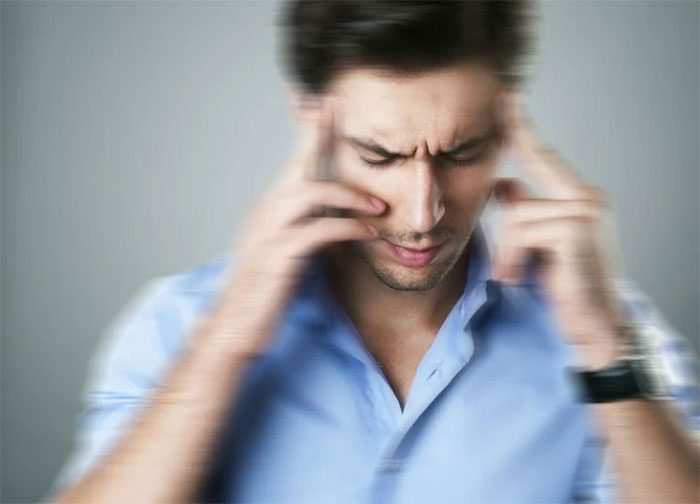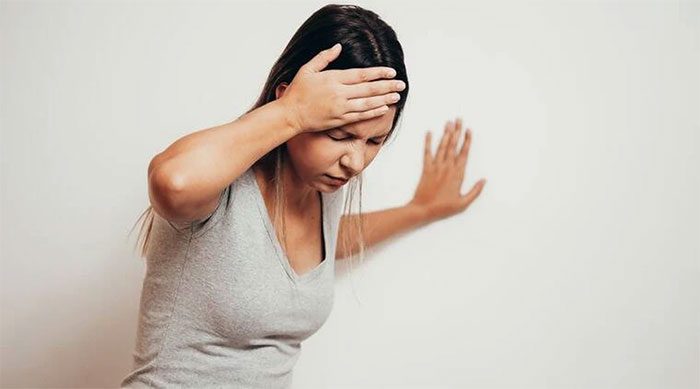Have you ever felt dizzy or lightheaded when getting out of bed or standing up from a chair? This could be a warning sign that you are experiencing orthostatic hypotension. Orthostatic hypotension is defined as a decrease in systolic blood pressure of 20 mm Hg or more, and a decrease in diastolic blood pressure of 10 mm Hg.
What You Need to Know About Orthostatic Hypotension
Orthostatic hypotension affects about 20% of older adults. This condition is also common in individuals who have recently been lying down or have just given birth. Additionally, teenagers experiencing rapid growth may experience orthostatic hypotension.
1. What is orthostatic hypotension?
Orthostatic hypotension refers to the condition where blood pressure drops when a person stands up after sitting or lying down.
When a person stands up after sitting or lying down, the body must work to adjust to this change in position. It is particularly important for the body to push blood upward and deliver oxygen to the brain. If the body fails to do this adequately, blood pressure may drop, and a person may feel dizzy or even faint.
Orthostatic hypotension can lead to serious complications such as fractures from falls, shock, or organ failure if blood pressure remains too low, as well as stroke or heart disease due to fluctuating blood pressure.

Orthostatic hypotension refers to the condition where blood pressure drops when a person stands up after sitting or lying down (Image: Internet)
2. Symptoms of orthostatic hypotension
Symptoms of orthostatic hypotension include:
- Dizziness or lightheadedness
- Blurred vision
- Confusion
- Unusual fatigue
- Weak or wobbly legs
- Rapid heartbeat
- Nausea or feeling hot and sweaty
- Fainting in severe cases
- Shortness of breath, although less common
Symptoms may worsen after consuming a large meal, during exercise, prolonged bed rest, and in hot weather. Orthostatic hypotension tends to occur more frequently and severely in the morning, as blood pressure is often at its lowest upon waking.

Dizziness, blurred vision, and rapid heartbeat are typical symptoms of orthostatic hypotension (Image: Internet)
3. Causes of orthostatic hypotension
Your chances of experiencing orthostatic hypotension increase as you age. As people get older, the cells in the heart and arteries that help maintain stable blood pressure respond more slowly. Older adults are often taking medications to treat diabetes or cardiovascular issues, which can also contribute to this condition.
Causes of orthostatic hypotension include:
Dehydration
Orthostatic hypotension occasionally occurs due to dehydration, making it difficult for your body to regulate blood pressure effectively.
You may experience mild dehydration if you overexert yourself during exercise, spend time outdoors in hot weather, soak in a hot bath, or are recovering from the flu. Dehydration is a concern if you have poorly managed diabetes or are taking diuretics for high blood pressure.
Diet
About 1/3 of older adults tend to feel dizzy after consuming a large meal. Your intestines require more blood to digest food, which reduces blood flow to other parts of the body. When your body cannot adjust to this change, your blood pressure may drop, leading to dizziness or fainting. Doctors refer to this as postprandial hypotension.
Heart conditions
Individuals with heart problems, valve issues, heart failure, or extremely low heart rates may be more susceptible to orthostatic hypotension. Anemia or blood loss can also cause dizziness due to low blood pressure.

People with heart conditions are prone to orthostatic hypotension (Image: Internet).
Medications
Dizziness when standing up can also be caused by medications you take for heart conditions, including ACE inhibitors, angiotensin receptor blockers (ARBs), beta-blockers, calcium channel blockers, diuretics, and nitrates.
Medications for Parkinson’s disease and erectile dysfunction, some antidepressants, antipsychotics for mental health, and muscle relaxants can also lower your blood pressure. Taking multiple medications or consuming alcohol alongside these drugs can increase the likelihood of dizziness due to low blood pressure.
Neurological factors
Orthostatic hypotension due to neurological factors occurs when there is a decreased release of norepinephrine from nerves in the sympathetic nervous system. Norepinephrine is a neurotransmitter that constricts blood vessels in response to stress.
Due to the reduced release of norepinephrine, blood pressure decreases upon standing because blood vessels cannot constrict and compensate for the blood pooling in the legs due to gravity.
Conditions associated with orthostatic hypotension due to neurological factors include Parkinson’s disease, Lewy body dementia, and familial dysautonomia.
4. What to do if you have orthostatic hypotension?
Orthostatic hypotension can be effectively managed by addressing underlying causes. Treatment options may vary depending on the specific cause. Here are some common treatment methods:
- Treat underlying conditions: If a medical condition such as dehydration, anemia, or heart disease is causing orthostatic hypotension, treating these conditions may help alleviate symptoms.
- Adjust medications: In some cases, orthostatic hypotension may be a side effect of certain medications. Dosages may be adjusted, or in some cases, a different medication may be prescribed to alleviate symptoms.
- Stand up correctly: If lying in bed, first sit up slowly—this can help prevent a sudden drop in blood pressure when standing.
- Use compression stockings: Wearing compression stockings on your legs can help improve blood flow and prevent blood pooling in the lower body, reducing the risk of orthostatic hypotension.
- Stay hydrated if you’re dehydrated and increase salt intake: Increasing fluid and salt intake can help maintain blood volume and prevent dehydration, which can contribute to orthostatic hypotension. However, excessive salt intake can also affect heart health, so it should be managed appropriately.

Adjusting lifestyle, medications, and managing any underlying conditions to control and prevent orthostatic hypotension (Image: Internet).
5. How to prevent orthostatic hypotension
If you are prone to orthostatic hypotension, the following measures may help reduce symptoms:
- Maintain a moderate body temperature: Avoid hot baths or saunas, as high temperatures can lead to dehydration and result in low blood pressure.
- Stay hydrated: Drink plenty of water, limit alcohol consumption, and avoid heavy, carbohydrate-rich meals to help maintain adequate blood volume and prevent dehydration.
- Avoid lying flat while sleeping: Elevate your head at night by using an extra pillow or tilting the mattress to reduce the risk of orthostatic hypotension when standing up.
- Prepare before standing: Spend more time transitioning from sitting or lying down to standing. Having a stable object nearby to hold onto can provide support and prevent the risk of falling.
- Move your muscles: If you need to stand for long periods, shift your legs to promote blood circulation. Additionally, performing mobility exercises such as squeezing a soft rubber ball or clenching and relaxing your hands can help raise blood pressure before standing.
- Improve blood circulation and pressure: Wearing compression socks or abdominal binders can enhance blood flow and help maintain blood pressure.
Overall, orthostatic hypotension is a condition that many people experience. Sometimes this condition is not concerning as it may be due to dehydration or improper standing. However, frequent occurrences of orthostatic hypotension can signal a more serious issue. Therefore, you should seek further medical advice if you encounter this symptom.


















































